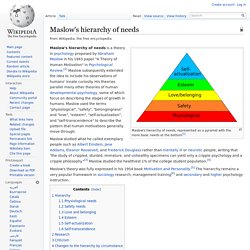

The Reality of Repressed Memories. In 1990, a landmark case went to trial in Redwood City, California.

The defendant, George Franklin, Sr., 51 years old, stood trial for a murder that had occurred more than 20 years earlier. The victim, 8-year-old (Susan Kay Nason, was murdered on September 22, 1969). Franklin's daughter, Eileen, only 8 years old herself at the time of the murder, provided the major evidence against her father. What was unusual about the case is that Eileen's memory of witnessing the murder had been repressed for more than 20 years. Eileen's memory did not come back all at once. Eileen's memory report was believed by her therapist, by several members of her family, and by the San Mateo County district attorney's office, which chose to prosecute her father.
Eileen's detailed and confident memory impressed a number of people. On the other hand, the clinical anecdotes and the loose theory used to explain them remain unconvincing to some psychotherapists and to many laboratory researchers. Popular Articles. Personality Tests. Manipulation News, Videos, Reviews and Gossip - Lifehacker. Emotional self-regulation. Emotional self-regulation or regulation of emotion is the ability to respond to the ongoing demands of experience with the range of emotions in a manner that is socially tolerable and sufficiently flexible to permit spontaneous reactions as well as the ability to delay spontaneous reactions as needed.[1] It can also be defined as extrinsic and intrinsic processes responsible for monitoring, evaluating, and modifying emotional reactions.[2] Emotion self-regulation belongs to the broader set of emotion-regulation processes, which includes the regulation of one's own feelings and the regulation of other people's feelings.[3] Theory[edit] Process model[edit]

Self psychology. Self psychology is a school of psychoanalytic theory and therapy created by Heinz Kohut and developed in the United States at the Chicago Institute for Psychoanalysis.

Self psychology explains psychopathology as being the result of disrupted or unmet developmental needs. Essential to understanding self psychology are the concepts of empathy, self-object, mirroring, idealising, alter ego/twinship and the tripolar self. Though self psychology also recognizes certain drives, conflicts and complexes present in Freudian psychodynamic theory, these are understood within a different framework.
Origins[edit] Kohut came to psychoanalysis by way of neurology and psychiatry in the 1940s, but then 'embraced analysis with the fervor of a convert... Kohut argued that therapy should be more involved with the patient than with analytical theories. Codependency. Development and scope of concept[edit] Historically, the concept of codependence "comes directly out of Alcoholics Anonymous, part of a dawning realization that the problem was not solely the addict, but also the family and friends who constitute a network for the alcoholic.

"[3] It was subsequently broadened to cover the way "that the codependent person is fixated on another person for approval, sustenance, and so on. Narcissism. Narcissism is a concept in psychoanalytic theory, introduced in Sigmund Freud's On Narcissism.

The American Psychiatric Association has the classification narcissistic personality disorder in its Diagnostic and Statistical Manual of Mental Disorders (DSM). Narcissism is also considered a social or cultural problem. It is a factor in trait theory used in some self-report inventories of personality such as the Millon Clinical Multiaxial Inventory. Dialectical behavior therapy. Dialectical behavior therapy (DBT) is a therapy designed to help people change patterns of behavior that are not effective, such as self-harm, suicidal thinking and substance abuse.

This approach works towards helping people increase their emotional and cognitive regulation by learning about the triggers that lead to reactive states and helping to assess which coping skills to apply in the sequence of events, thoughts, feelings and behaviors that lead to the undesired behavior. DBT assumes that people are doing the best that they can, but either are lacking the skills or are influenced by positive or negative reinforcement that interfere with one’s functioning. DBT is a modified form of cognitive-behavioral therapy that was originally [timeframe?] Developed by Marsha M. Linehan, a psychology researcher at the University of Washington, to treat people with borderline personality disorder (BPD) and chronically suicidal individuals. Overview[edit] Four modules[edit] Mindfulness[edit] Observe.
Maslow's hierarchy of needs. Maslow's hierarchy of needs, represented as a pyramid with the more basic needs at the bottom[1] Maslow's hierarchy of needs is a theory in psychology proposed by Abraham Maslow in his 1943 paper "A Theory of Human Motivation" in Psychological Review.[2] Maslow subsequently extended the idea to include his observations of humans' innate curiosity.

His theories parallel many other theories of human developmental psychology, some of which focus on describing the stages of growth in humans. Maslow used the terms "physiological", "safety", "belongingness" and "love", "esteem", "self-actualization", and "self-transcendence" to describe the pattern that human motivations generally move through. Maslow's theory was fully expressed in his 1954 book Motivation and Personality.[5] The hierarchy remains a very popular framework in sociology research, management training[6] and secondary and higher psychology instruction. Hierarchy Physiological needs Safety needs Safety and Security needs include: Splitting (psychology) Failure in thought to bring together both positive qualities and negative aspects of people into a cohesive whole In depression, exaggerated all-or-nothing thinking can form a self-reinforcing cycle: these thoughts might be called emotional amplifiers because, as they go around and around, they become more intense.

Typical all-or-nothing thoughts: